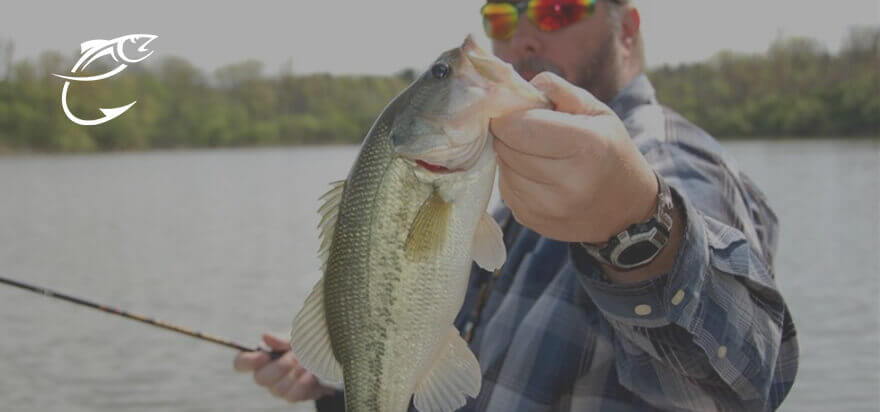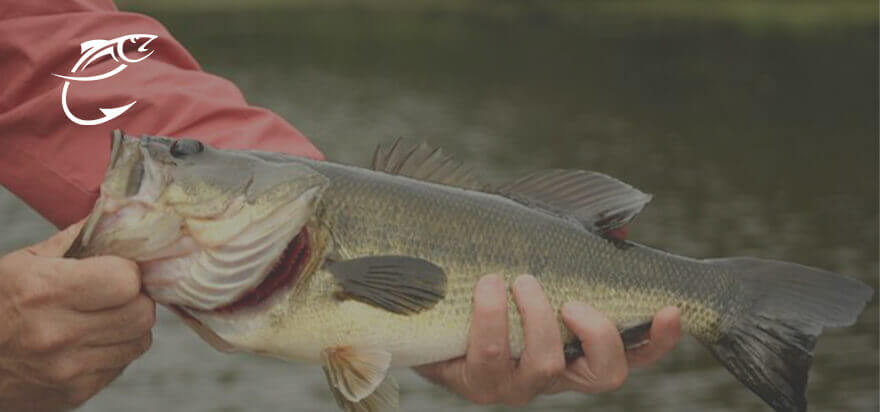If you have been bass fishing for a long time, you probably know how to hold bass after catching it. But chances are you, along with some other anglers, might be doing it wrong, which could be unhealthy and dangerous for a bass. Being among one of the challenging and relaxing sports, bass fishing needs enlightened and sensible anglers to preserve both the fish and the sport.
This comprehensive article will provide you with a guide on how to hold bass in a careful and right way after catching it, the difference between right and wrong holding techniques, pro tips to consider before holding a bass, and much more. In the end, all of this thorough knowledge will put you among enlightened, thoughtful, and well-informed anglers.
Things to Remember Before Holding a Bass
There are a few critical ins and outs every angler must know about bass fishing. They can keep both you and the bass safe. Moreover, keeping these points in mind, you can quickly figure out how to hold bass after catching it.
1. Razor Sharp Teeth
Bass have razor-sharp teeth like a shallow saw blade. Unlike a shark, they are not noticeable, but they are enough to scrape or cut a thumb placed too deep inside the mouth. So, always be careful while placing your thumb inside its mouth.
2. Mucoprotein Slime Coat
Bass have a layer of mucoprotein slime coat around its body which acts as its immune system and protects it from infections and lethal pathogens. Holding a fish for too long or dropping it by accident can cause this layer to come off. A bass with a low immune system cannot cope with the challenges of its environment and dies. So, don’t hold your bass for too long and keep the contact at a minimum.
3. Weight and Size of the Bass
You might hit a jackpot of different weights and sizes each time you go for bass fishing. So, you can’t hold all using the same technique as it is not a “one size fits all” sport. So, you must have an in-depth knowledge of different holding tactics and their pros and cons. All of this knowledge will help you figure out how to hold fish after catching.
Let’s talk about different holding methods in detail so that you can better understand how to hold a bass fish.
You May Also Check: 7 Best Salmon Rod For The Money
Why Holding Matters in the First Place

People with even years of experience have been seen handling a bass incorrectly. This mishandling puts the jaw muscles, mucoprotein slime barrier, gills, internal organs, and bones of a bass at a huge risk. That’s why the question of how to hold bass matters the most.
Now, as you know why holding matters, let’s dive deep into different safe holding options. Vertical holding and horizontal holding are the most popular safe holding methods among bass anglers, but we will discuss angled holding as well, along with these, so that you can better understand when to use each.
Vertical Hold

Holding a bass vertically is one of the easiest and safest bass holding techniques if done properly. This holding method doesn’t require any extra effort as the weight of the bass is used to handle it. But despite its ease, there are certain details that you must draw your attention to ensure the safety of both bass and you.
To make a successful move, grab the lower lip or dentary of the bass by placing your thumb inside its mouth while the rest of your fingers are underneath the lower jaw. While holding vertically, make sure that you are holding it straight so that the weight of the bass is evenly distributed and its tail is right underneath its mouth. In this way, its jaws are relieved off of the pressure due to its weight.
Make sure to maintain a firm grip so that the bass should not wriggle out of your hands because dropping a bass can cause more damage relative to holding it incorrectly. Also, ensure that you are not holding it too tight as it can cause its lower jaw to dislocate, resulting in the inability of a bass to close its mouth properly. When a bass cannot close its mouth properly, it cannot hunt and hold its prey, and that can starve a bass to death.
Above all, don’t title your prized bass too much, as holding a bass at an angle greater than 10 degrees can also cause permanent damage to its lower jaw. Due to these reasons, despite its ease, not all anglers find it as the safest holding method for bass because not everyone can maintain a correct angle. That’s why this method is mostly used to hold a small bass. For larger and heavy bass, the horizontal hold is recommended.
Tips to Remember While Holding a Bass Vertically
While catching a bass, some anglers are so much excited and caught up in a moment that they completely ignore the fact that bass have razor-sharp teeth similar to a shallow saw blade and put their thumb too deep in its mouth. Although they don’t have teeth as large and sharp as a shark, they are enough to cut and do the damage. Moreover, due to a rapid and unconscious reaction out of the bass bite, you can drop and even damage the gill plate of the bass resulting in permanent damage to its respiratory system.
That’s why it is advised not to get hasty out of the adrenaline rush and be patient while holding your prized bass to avoid any damage.
Horizontal Hold

If you hit a jackpot of a largemouth bass, you cannot hold it using the vertical holding method as it will overextend the lower jaw of the bass because of pressure due to its heavy weight. Moreover, you cannot have a more visually appealing trophy picture of your prized bass employing vertical holding. That’s why horizontal holding answers the exciting question of how to hold a largemouth bass.
Horizontal holding is the same as vertical holding but with slight differences. Take a start with the same grip technique, grab the lower lip by putting your thumb inside the mouth while the rest of the fingers are underneath the lower lip. Now instead of holding it using its weight as you do in vertical holding, place your other hand gently underside its body with the thumb on one side and other fingers on the other side near the tail or rare fin for support. Utilize available space behind the anal fin of the bass for support. This way you can handle a largemouth bass in a better way.
While holding your jackpot using the horizontal holding technique, make sure that you keep its head slightly above the body to equal distribution of weight. Holding a bass with its head below the body or holding it at any angle greater than 10 degrees would exert a lot of pressure on its jaws. Moreover, holding a bass with unequal distribution of its weight can also damage its respiratory system. That’s why maintaining a certain angle is necessary.
Make sure to be gentle while supporting the bass. Just use fingers and don’t squeeze the bass as there is no need for a firm grip. Your hands could get slimy and get covered with bass smell but this holding method is ideal for holding all kinds of sizes and weights.
Tips to Remember While Holding a Bass Horizontally
Just like any other fish, bass also have delicate internal organs which must be protected against any external pressure. A lot of anglers squeeze the bass too hard out of their excitement for a trophy photo. This can damage its internal organs and ultimately jeopardize its life. So, always be gentle while holding your prized bass to preserve both the sport and the bass.
Razor-sharp teeth is another factor some anglers ignore sometimes and put their thumb too deep in the bass mouth. This carelessness can lead to a cut or a thumb infection. So, always prioritize the safety of bass and yourself.
Angled Hold
Although this holding method is not recommended due to its disadvantages, it could be suitable for holding small fish. Any angle which is 10 or greater than 10 degrees from horizontal position exerts a tremendous amount of pressure on the jaws of bass and could cause permanent damage.
A lot of amateur anglers have been seen holding bass at an angle. Some of them grab the bass by its lower lip and let the body hang around at an angle. That’s why holding a bass at an angle is not recommended as it threatens the existence of the bass.
Some Pro Tips for Holding a Bass
- If you are fishing for catch and release, don’t keep your prized bass out of water for too long because the longer you keep it out of the water, the longer it will take to recover after going back in the water. Moreover, keeping it out for too long will make it feel annoyed and agitated and it will start twisting and squirming which can cause harm to the bass.
- Avoid getting in contact with the gill plate or gills as this contact can damage the respiratory system of the bass resulting in its death.
- If you are releasing your bass, slide its head first into the water to let your bass orient itself.
- Catch your bass using fish grabbing tools to keep minimal damage and contact.
- If you are fishing in seawater, don’t just reel in to pull your hooked bass. Instead, use water currents to reel in and scoop the fish out.
Conclusion
Now as you know how to hold bass safely and correctly, you can easily differentiate between both right and wrong holding techniques. By employing only the right holding practices, you can save both you and your prized bass. These right tactics will not only increase bass life but also result in more memorable bass fishing trips.


